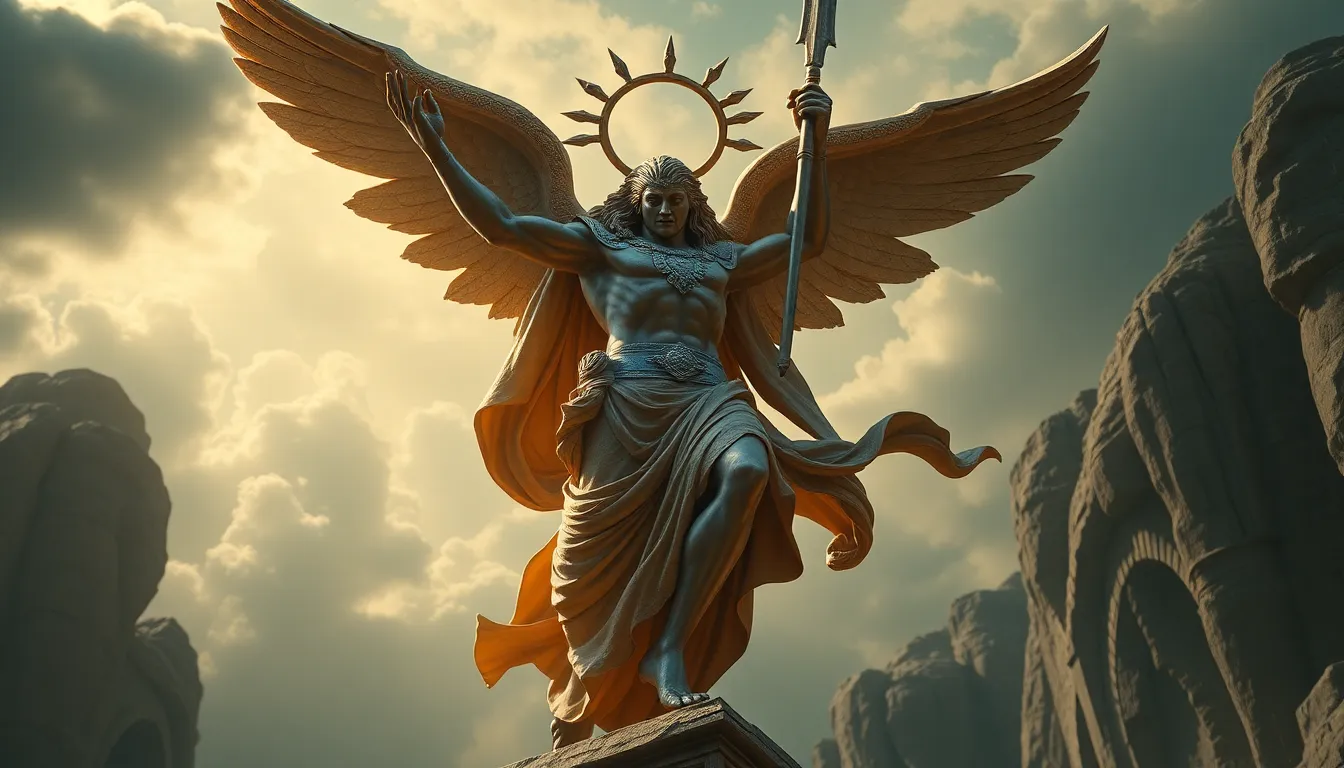How Daedalus’s Innovations Changed the Course of Greek Myths
I. Introduction
Daedalus is one of the most iconic figures in Greek mythology, celebrated as a master craftsman and inventor. His stories are woven into the fabric of ancient tales, illustrating the profound impact of innovation on human experience. Throughout Greek mythology, innovation is a recurring theme that not only shapes the narratives but also reflects the cultural values of the time. This article aims to explore Daedalus’s contributions to these myths and how his inventions influenced the course of Greek storytelling.
II. The Mythological Background of Daedalus
Daedalus, often depicted as a brilliant artisan, is believed to have originated from Athens. His lineage is shrouded in myth, often said to be a descendant of the royal family of Cecrops. His narrative is rich with intrigue and tragedy, showcasing the complexity of his character.
- Origins and lineage: Daedalus was born to a family of craftsmen, and his skills were evident from a young age.
- Key myths associated with Daedalus: The most famous myths include his creation of the Labyrinth to contain the Minotaur and the tragic tale of his son, Icarus.
- Role in the broader context of Greek mythology: Daedalus serves as a bridge between divine inspiration and human ingenuity, reflecting the tension between gods and mortals.
III. Daedalus as an Archetype of the Inventor
Daedalus embodies the archetype of the inventor in Greek mythology, characterized by his intellect, creativity, and ambition. His innovations often showcase both the brilliance of human creativity and the potential for downfall.
- Characteristics of Daedalus as an innovator: He is resourceful, clever, and capable of envisioning solutions to seemingly insurmountable problems.
- Comparison with other mythological figures: Unlike Prometheus, who defied the gods to bring fire to humanity, Daedalus navigates the complexities of human desire and divine retribution.
- The duality of creation and destruction: His inventions, while ingenious, often result in unintended consequences, highlighting the precarious balance of innovation.
IV. Key Innovations Attributed to Daedalus
Daedalus’s contributions to mythology are underscored by several key innovations that have become emblematic of his character.
- The Labyrinth: Designed to contain the Minotaur, the Labyrinth symbolizes the intricate nature of human challenges and the struggle to find a way out of chaos.
- The wings of Icarus: Perhaps his most famous creation, the wings represent the desire for freedom and the consequences of overambition. Icarus’s tragic fall serves as a poignant reminder of the limits of human aspiration.
- Other inventions:
- Automatons and sculptures that could move independently, showcasing Daedalus’s ahead-of-his-time thinking.
- A wooden cow that helped Queen Pasiphae mate with a bull, demonstrating the lengths Daedalus would go for his patrons.
V. The Social and Cultural Impact of Daedalus’s Innovations
Daedalus’s innovations had a profound impact on the social and cultural landscape of ancient Greece.
- Influence on the perception of technology: Daedalus was both revered and feared, reflecting the ambivalence towards technological advancement in ancient society.
- Reflection of human ambition and hubris: His story serves as a cautionary tale about the dangers of overreaching, encapsulating the Greek concept of hubris.
- The legacy in literature: Daedalus’s character and inventions have inspired countless works, influencing both Greek and Roman literature, as well as later artistic interpretations.
VI. Daedalus’s Innovations as Metaphors in Greek Mythology
The innovations attributed to Daedalus often serve as powerful metaphors within Greek mythology.
- Themes of freedom and entrapment: The Labyrinth symbolizes the complexity of choices and the struggle for liberation, while the wings represent the aspiration to break free from constraints.
- The interplay of fate and human agency: Daedalus’s attempts to control his destiny often lead to tragic outcomes, illustrating the tension between personal ambition and the whims of fate.
- A cautionary tale: The story of Daedalus and Icarus warns of the perils of excessive pride and the dangers of ignoring wise counsel.
VII. Modern Interpretations and Adaptations
Daedalus’s legacy endures in contemporary literature and art, highlighting the timeless nature of his story.
- Contemporary literature: Authors and playwrights continue to draw upon Daedalus’s narrative, using it as an allegory for human creativity and its consequences.
- Artistic representations: Daedalus and Icarus have been depicted in various forms, from paintings to modern media, reflecting ongoing fascination.
- Relevance in modern contexts: The themes of innovation, ambition, and the ethical implications of technology resonate deeply in today’s society.
VIII. Conclusion
Daedalus’s impact on Greek mythology is profound and multifaceted. Through his innovations, he embodies the complexities of human creativity, the dangers of hubris, and the eternal struggle for freedom. The narratives surrounding him serve as a reminder of the fine line between brilliance and folly, reflecting the cultural values of ancient Greece.
Ultimately, Daedalus’s legacy continues to inspire and caution, reminding us of the enduring nature of mythological themes that shape our understanding of innovation and its consequences in both ancient and modern contexts.




